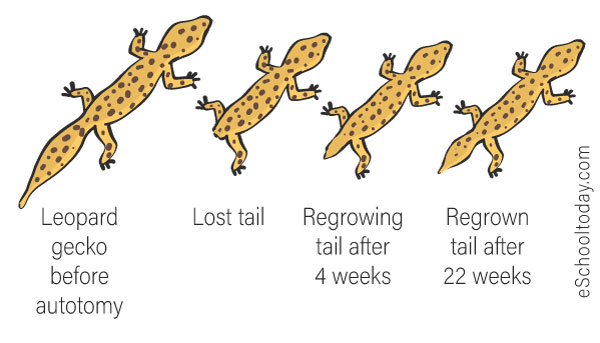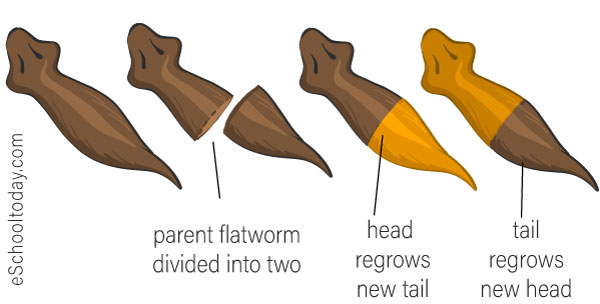- Asexual Reproduction
What is Regeneration?
Regeneration in asexual reproduction is the ability of a simple organism to re-grow its lost parts.
Simple organisms are more successful with regeneration than complex organisms. For example, some crabs can grow new claws or body parts after the original parts are lost. Regeneration of lost body parts occurs mostly in invertebrates. Note that the broken-off claw may not be able to grow into a new lobster.
Some lizards (such as the leopard gecko) can grow new tails when they lose them (autotomy).
Illustration of regeneration in a leopard gecko

One great example of regeneration in living organisms is the Planarium, a type of flatworm which scientists love to study. If this flatworm is cut into two with a razor, the head will regrow a new tail, and the tail will regrow a new head in just a couple of weeks.
Illustration of regeneration in a flatworm
 NB: The flatworm is also a great example of fragmentation asexual reproduction as discussed on the next page.
NB: The flatworm is also a great example of fragmentation asexual reproduction as discussed on the next page.
Source 1.
Tail autotomy and subsequent regeneration alter the mechanics of locomotion in lizards Kevin Jagnandan1, Anthony P. Russell and Timothy E. Higham. © 2014. Published by The Company of Biologists Ltd | The Journal of Experimental Biology (2014) 217, 3891-3897 doi:10.1242/jeb.110916. http://jeb.biologists.org/content/217/21/3891 Accessed on 19 Sept 2017
